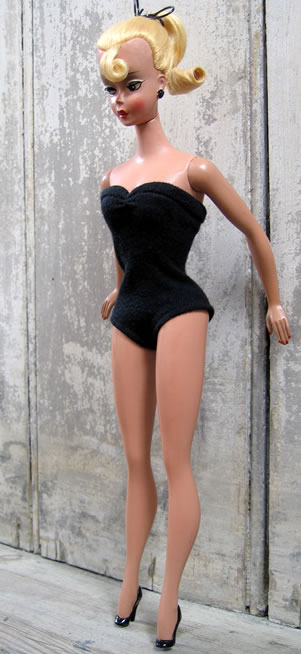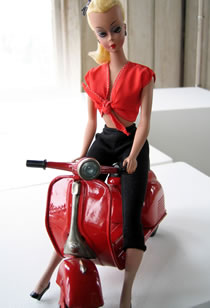IAK The comic strip was created not by Hausser but Reinhard Beuthien . In my eyes- he is the real inventor (creator) of Lilli, even the fashions that were later produced by 3M, he was drawing already years before. Based on this artwork another designer named Max Weißbrodt modeled the Lilli doll 3 years after the first cartoon. He worked for the O&H. Hausser Company in Coburg. To sculpt Lilli cost him some sleepless nights, his son told me in an interview, because it was not easy to mold her sexy look and her three dimensional face.
AZO What did Lilli represent? What was her "story"?
IAK Her personality was naive, sexy but at the same time clever, she was easily able to wrap men around her little finger, yet she was still youthfully innocent. A doll that had an expression between a teenager and a woman. Lilli was a beauty and she was a lady of fashion. Lilli was a symbol of the new femininity, a symbol of liberation and the satisfaction of women's pent-up demand for consumer goods. Her perfect body,her high heels, red lips and fingernails, her ponytail and the wisp of hair curling over her forehead, her made-up eyebrows and her cheeky expression exuded sex appeal,confidence and independence. She wore the outfits of dream careers like stewardess and ballerina, or a sporty look for tennis or ice skating. She turned heads in ball gowns, furs, haute couture, lingerie, and American style casual clothes.
AZO History would have it that the Bild Lilli cartoon was casually inserted to fill space in the newspaper. Was the woman she represented already established in women's magazines? In cinema? Or was she actually a character Beuthian had been working on for a period of time, not formerly depicted in the media.....waiting for the chance to get exposure for...his view of the new woman?


